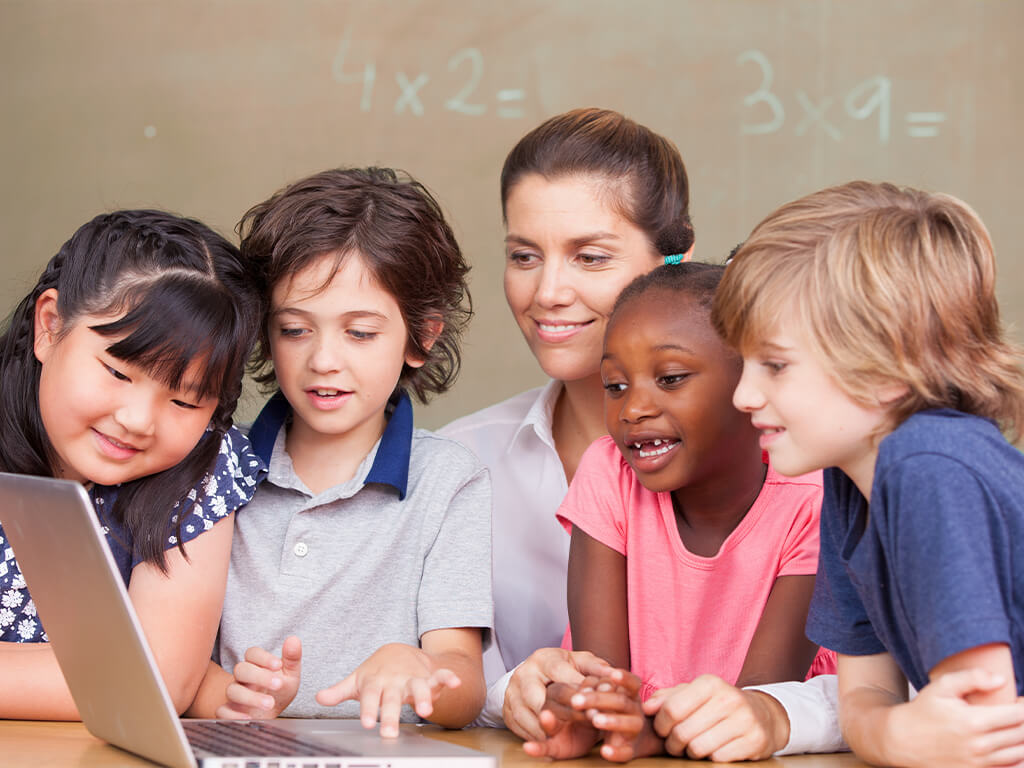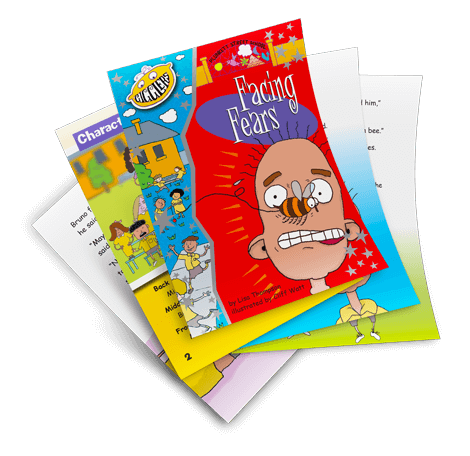
Fight, flight, or freeze – the three natural responses to any new or stressful situation that we might find ourselves in. We all have (or will at some stage) respond to a situation in one of these ways and there is no doubt your students will too….
You might find them daydreaming, throwing pencils, being rude or disruptive to the class. While often these actions are just kids being kids, sometimes they may be a more serious reaction caused by discomfort, stress, or anxiety.
As teachers we might see these responses monthly, weekly, or even daily in our students.
So, what’s the best way to tackle situations like this? What can we implement into the classroom to reduce stressful situations? How can we best help students through?
The what’s and why’s of the fight, flight or freeze response
The fight, flight or freeze response, sometimes referred to as the stress response, come from the part of our brain called the Amygdala. When we perceive a stressful situation, the Amygdala responds with what has evolved from a survival mechanism, almost instantaneously our bodies get a surge of stress hormones and we experience a sequence of physiological changes – our heart may race, beads of sweat may appear, our muscles may tense, our tummies may churn and we may also feel shaky. All of us will have different situations that can trigger these responses and the severity of our reactions will vary too.
Identifying the 3 responses in the classroom
The 3 responses to stress have all evolved from the need to keep safe. Let’s explore what fight, flight and freeze responses can look like in students.
- Fight – In the past, when our ancient ancestors were faced with an invading tribe, they would have picked up their weapons and sought to overcome the cause of their fear through fighting.
In a classroom situation, this response is seen in the child who lashes out at those around them, either verbally or physically. Their behaviour will be seen as aggressive and can also manifest itself in the throwing of objects from pencils to chairs and desks. - Flight – In the past, this response would have seen our ancient ancestors run away from a dangerous animal or situation.
In the classroom situation, the flight reaction is exhibited by a student that faced with stress runs for the classroom door, hides at the end of playtime, or locks themselves in the toilets. The reaction can also be much more subtle, with a child choosing to switch off and not engage in a lesson – while they haven’t physically attempted to flee the situation, they are mentally opting out of it. - Freeze –Our ancient ancestors, when charged by herd of animals would have tried to make themselves invisible, for instance, by hiding behind a rock and staying still until the threat had gone.
In the classroom this can often be the subtlest of reactions to stress and harder to identify. It can manifest as a child who appears very quiet and shy at school but catch them on the weekend or at home and they will be animated and lively. In this situation, they are trying not to get noticed in class. They never offer an answer and asking them a question directly serves only to heighten their anxiety. At a more extreme level it can also manifest itself it can also manifest itself as the child refusing to follow instructions or complete work.
It is important to remember that if a child has encountered a stressful experience previously, they may be reacting to the association between something that can appear completely normal and a link to their memory of a stressful situation – the reaction may appear to have come completely out of the blue, but something has triggered their behaviour. Something being knocked off the table and banging on the floor, might result in a sound which triggers a memory of a traumatic event that involved a loud crashing sound.
How to set up a class to reduce the chances of a stressful situation
Some measures you can take to help create a safe environment and prevent students feeling stressed and anxious include:
- Having clear expectations and ways for students to communicate when they are feeling unhappy.
- Smiling, welcoming students into class, focusing on and praising positive behaviours.
- Avoiding sarcasm at all costs, praising effort and embracing mistakes. Students need to feel that it is okay to make a mistake, say something silly, give the wrong answer or trip in PE. Expose your own vulnerability, even if it’s writing the wrong date on the board.
- Giving students age-appropriate information about the way their brains work can help them to understand their own emotions and the emotions of other.
- Sharing fictional stories with the class, that open discussions about feelings of stress and anxiety. By depersonalizing the situation, students have the chance to think about their own behaviour when they are stressed, while also developing empathy for how others might feel when they are anxious.
Download the pack below from the Reading Eggs Library that can be used to talk about anxiety and fear responses.

Facing Fears – Ideal for Years 2-4. Bruno has a fear of bees and has a close encounter with one in the playground. How do his class and his teacher react? What do they find out about fears?
Supporting students through the fight, flight or freeze response
No matter how welcoming and happy you try to make your classroom, at some point you are likely to encounter a student exhibiting a stress response – what now?
- Know your school’s Safeguarding procedures. Your school will have a policy that sets out how it can support both staff and students in the event of a student experiencing an extreme flight, fight or freeze response.
- Ensure your class is safe. If a student has gone into a fight response which is exhibited as throwing classroom objects, if possible, remove the student from the class. Where this is not possible, remove the rest of the class from the situation. This is where your safeguarding procedures come in – is there a code word or colored card that you can send with a child to the next class or have you got a phone with a direct line to someone out of class?
- Ensure the student in the stress response is safe. For instance, if the child has run from the classroom, immediately contact an adult who can pursue the child. In classrooms with an additional adult present, whoever has the closest relationship with the student would follow.
- De stress the situation. The student is reacting to hormones in their body, so before you can do anything they need to calm down. Encourage the student to breathe more slowly, count slowly as they breathe, try to exhale slowly. Model and talk, only a little, quietly and gently. If the stress response has caused a state where the student is very jumpy and thrashing out, they may need to work through some of their excess adrenalin first. Find a safe space within school grounds and let them pace up and down or jog until their energy subsides.
- Relax. Once the student has calmed down, encourage them to sit down. Offer them water. Comment positively on their calmer state, without referring to the stress response or reprimanding them for their earlier behaviour. Smile, try to establish a trusting relationship. If the child has sat down, sit with them. If they are standing, kneel so your face is at their height, but ensure you are giving them plenty of personal space.
- Reflect. Remember the situation is about their behaviour, not how it made you feel. Ask open ended questions to encourage the student to reflect and talk about the feeling that gave rise to their stress response. It can be helpful to ask questions used in a Restorative Justice approach.
– What happened?
– What were you thinking?
– How do you think others felt?
– What can we / you do to put things right?
– How might we / you do things differently in the future? - Respond. Record the situation and share the information with your school Leadership Team.
Sometimes the student will talk about what caused the stress – it may be something you can work to resolve, like their friend laughed at a silly error they made. If the student reveals something happening outside school that has triggered the stress reaction, follow your school’s Safeguarding procedures
And finally – YOU….
Watching a child in your class going through an extreme fight, flight or freeze reaction can be extremely stressful and we know from this article that stress can cause a variety of reactions in adults as well. Make sure that you talk to Senior Leaders in your school about any concerning behaviour in your classroom, and document what happened. If you feel you would like to talk to someone else about your experiences in the classroom, please call the mental health helplines in your region.












